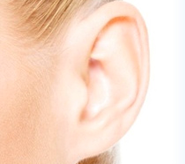
THE SEARCH FOR HARMONY
AND ENHANCED FUNCTIONALITY
SURGICAL PROCEDURES FOR ALL TYPES
OF COSMETIC AND FUNCTIONAL REQUIREMENTS

Home/Specialisations/Nasal valves
The use of transductors and modern research have made it possible to correctly assess the behavior of air currents within the nose.
These studies have revealed that the function of the nose is more linked to dynamic criteria rather than to static criteria (e.g. one nostril works every six hours, alternating with the other). In this light, this nasal valve is fundamentally important and as needed, it slows down or accelerates the flow of air currents. Above all, it makes us consider those defects such as nose humps, saddleback shaped or distortions of the pyramid that directly affect the characteristics of the valve itself.
Greater emphasis is being placed on the concept that the complete recovery of nasal function also includes not only the anatomical structure such as the nasal septum and turbinates, but also that bone section of the external nose and even more so, the triangular cartilage (cartilage back) and their relations with the nose wings’ cartilage (cartilage of the nose tip).
A curious fact regarding the nasal valve may be represented by the function carried out by the famous plaster adhesive applied on the nose bridge which is very much in vogue among the sports professionals. These adhesives in fact widen the nasal valve at the top of the cartilage where they are placed, thus allowing a greater amount of air to pass through the nasal cavities. The sportsman benefits from this since during a brief sports competition, there is greater need to increase lung ventilation without needing to breathe through the mouth. In effect these adhesive band-aids dilate the nasal valve, increasing the air flow through the nose. As long as the use of these adhesives is limited to a few hours, there are no negative effects. Should they be used the whole day, the excessive amount of air would cause harm to the fine anatomical nose structure (especially the olfactory terminals).
Nasal adhesives are thus useful in some cases and for short periods of time. An ulterior use is for those who snore. The person who has a nasal valve defect often breathes noisily or snores. The application of adhesives may regulate nose breathing and at times also solve snoring problems.











